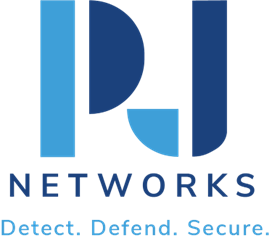SIEM vs traditional security. Ever wondered how these two fit together in your cybersecurity strategy? Let’s dive in and explore the intriguing world of security tools comparison and why an integrated security solution could be your best ally.
Introduction
In today’s fast-paced digital world, safeguarding your data and networks is more crucial than ever. Whether you’re a small business or a large corporation, cybersecurity is not something to be taken lightly. You might have heard about SIEM (Security Information and Event Management) and traditional security tools. But how do they compare? And more importantly, why do you need both?
Overview of Traditional Security Tools
Traditional security tools have been around for quite some time. They’ve served us well over the years. Here’s a quick rundown of what some of these tools include:
- Firewalls: Act as barriers between your internal network and external threats.
- Antivirus Software: Scans and removes malicious software.
- Intrusion Detection Systems (IDS): Monitors network traffic for suspicious activities.
- VPNs (Virtual Private Networks): Securely connects you to remote networks.
- Encryption Tools: Protects data confidentiality by scrambling it.
These tools form the backbone of your security strategy. They’re essential for everyday protection. But, they have limitations. For instance, they often work in silos, focusing on specific attack vectors.
What SIEM Brings to the Table
Now, let’s talk SIEM. SIEM represents a more holistic approach. It combines two essential functions: security information management (SIM) and security event management (SEM).
- Comprehensive Monitoring: SIEM gives you a bird’s-eye view of all network activities.
- Real-time Analysis: Offers real-time threat detection using advanced algorithms.
- Centralized Logging: Facilitates centralized logging of security data, useful for audits.
- Improved Compliance: Helps meet regulatory requirements more efficiently.
What makes SIEM special is its ability to provide broader insights across your entire infrastructure. It doesn’t just look at one aspect. Instead, it brings together data from all traditional tools to create a more cohesive security landscape.
Comparative Analysis
When it comes to SIEM vs traditional security, it’s not about choosing one over the other. They each have unique roles to play. Here’s how they compare:
- Scope of Protection: Traditional tools provide targeted protection, whereas SIEM offers broader oversight.
- Response Time: SIEM provides real-time response capabilities as opposed to the reactive nature of some traditional tools.
- Data Handling: SIEM aggregates and normalizes data across all sources; traditional tools often handle data in isolation.
- User Experience: Traditional tools are generally easier to deploy; SIEM requires more customization but yields better insights.
As you can see, they complement each other well. Traditional tools serve as the first line of defense, while SIEM provides comprehensive oversight and advanced threat detection.
Integration Strategies
So, how can you make them work together effectively? Here’s what I recommend:
- Unified Console: Implement a centralized console for managing both traditional tools and SIEM data.
- API Integrations: Use APIs to link SIEM with existing security tools for seamless data flow.
- Regular Updates: Keep all tools and systems updated to ensure they work efficiently together.
- Training and Awareness: Equip your team with the skills they need to leverage these tools effectively.
Integration is key. You don’t want one system working in isolation. The goal is to create a cohesive security architecture that aligns with your organization’s specific needs.
Conclusion
In the battle of SIEM vs traditional security tools, there are no losers. Each has its distinct advantages. The real winners are businesses that wisely integrate both into their cybersecurity strategy. By combining the granular protection of traditional tools with the overarching visibility of SIEM, we can create an effective integrated security solution. At the end of the day, your goal is to protect what’s most valuable to your business—your data, your assets, and your reputation. As we wrap up our security tools comparison, it’s clear that a robust cybersecurity strategy is not about having an either/or mindset but embracing the power of both.
